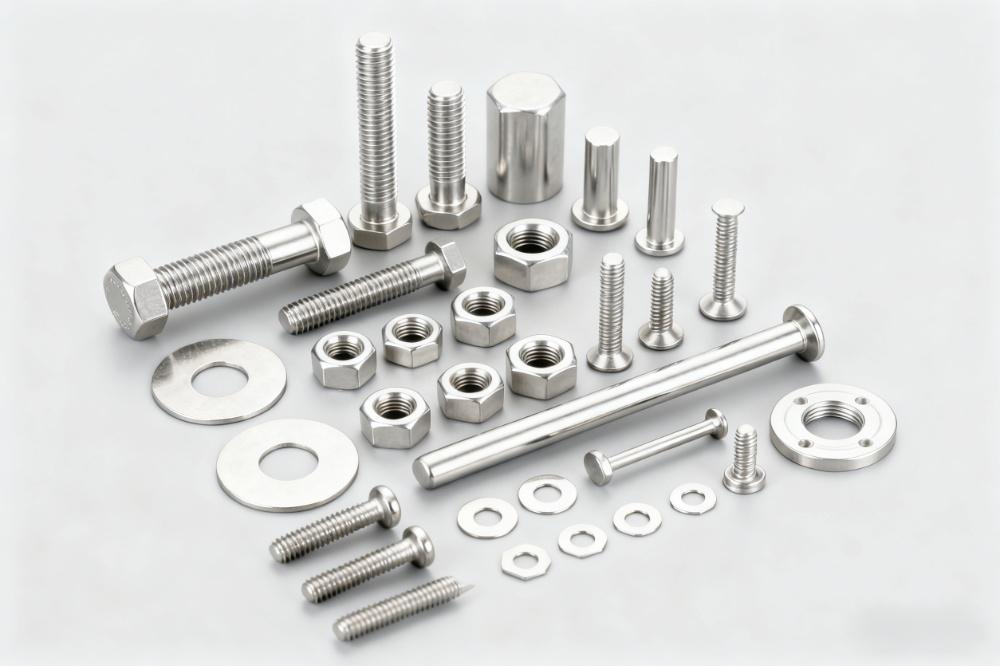When it comes to building in marine environments, the choice of materials can make the difference between long-lasting reliability and early corrosion failure. Among the many grades of stainless steel, 316 stainless steel stands out as the preferred option for coastal and marine applications. Known for its excellent corrosion resistance and ability to perform under harsh conditions, this marine grade material offers unmatched durability and value.
Let’s explore why 316 stainless steel fasteners are the best choice for coastal structures, and how they compare with other types of stainless steel such as 304 stainless steel.

Understanding Grades of Stainless Steel
There are multiple grades of stainless steel, each designed for specific environments and performance requirements. The two most common are grade 304 and grade 316.
- 304 stainless steel is widely used in construction, automotive, and general applications due to its high quality, strength, and cost effectiveness.
- 316 stainless steel, on the other hand, contains an additional element — molybdenum, which significantly improves its corrosion resistant properties, especially in salty or humid conditions.
For marine environments, this additional protection makes 316 stainless steel and its variant 316L stainless steel the superior choice.
Superior Corrosion Resistant Properties
Coastal and offshore structures face constant exposure to salt, moisture, and humidity. These factors accelerate corrosion and metal degradation over time.
316 stainless steel fasteners are engineered to resist pitting and crevice corrosion, two of the most aggressive forms of corrosion found in marine applications. The molybdenum content in 316 stainless steel provides superior corrosion resistant performance, ensuring fasteners remain strong and intact even after years of exposure to sea spray or brine water.
Meanwhile, 304 stainless steel, though corrosion-resistant, may not offer the same level of protection in marine environments where chloride levels are high.
Suitability for Marine and Coastal Use
When assessing suitability for marine or coastal projects, the primary consideration is how well a material can withstand corrosion and retain structural integrity.
316L stainless steel, a low-carbon variant of 316 stainless steel, enhances weldability and reduces the risk of carbide precipitation, making it ideal for marine grade fasteners used in shipbuilding, docks, harbors, and coastal architecture.
Whether in high humidity, saltwater exposure, or splash zones, 316 stainless steel fasteners deliver long term performance while ensuring durability in the harshest conditions.
High Temperature and Mechanical Performance
Beyond corrosion protection, 316 stainless steel maintains excellent mechanical strength and high temperature resistance. This makes it not only suitable for marine environments but also for industries such as oil & gas, power generation, and chemical processing.
Even under extreme conditions, 316 stainless steel fasteners maintain structural stability and long term performance, outperforming lower grades of stainless steel.
Cost Effectiveness and Long-Term Value
While 316 stainless steel fasteners may come at a higher initial cost compared to 304 stainless steel, their extended lifespan and reduced maintenance requirements make them highly cost effective in the long run.
By minimizing corrosion damage and replacement frequency, these high quality fasteners provide greater reliability and safety for marine applications, reducing downtime and maintenance costs.
FAQs
1. What makes 316 stainless steel better than 304 stainless steel in marine applications?
316 stainless steel contains molybdenum, which significantly improves its resistance to pitting and crevice corrosion in salty, humid marine environments, giving it an advantage over 304 stainless steel.
2. What is the difference between 316 and 316L stainless steel?
316L stainless steel has a lower carbon content than 316 stainless steel, improving weldability and reducing the risk of corrosion at welded joints—ideal for marine grade applications.
3. Can 304 stainless steel be used in coastal projects?
While 304 stainless steel offers good corrosion resistance, it may not perform as well as 316 stainless steel in marine environments where exposure to saltwater is frequent.
4. Are 316 stainless steel fasteners suitable for high temperature environments?
Yes. 316 stainless steel maintains excellent corrosion resistance and strength at high temperatures, making it suitable for both marine and industrial settings.
5. Why are 316 stainless steel fasteners called marine grade?
They are referred to as marine grade because of their superior corrosion resistant properties, particularly their ability to withstand pitting and crevice corrosion in saltwater and coastal conditions.
Conclusion
Choosing the right type of stainless steel is essential for the longevity and performance of any coastal or marine project. Thanks to their superior corrosion resistant characteristics, resistance to pitting, and long term performance, 316 stainless steel fasteners and 316L stainless steel fasteners are the most reliable options for marine grade construction.
Combining high quality, durability, and cost effectiveness, they ensure structural integrity and peace of mind—making them the clear choice for coastal engineers, builders, and architects worldwide.
